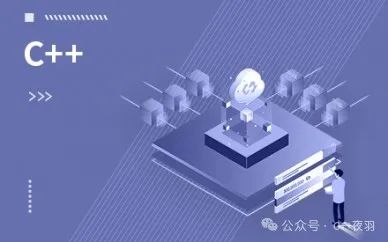C++ Network Programming: Practical Performance Evaluation and Optimization
1. Introduction

In today’s wave of digitalization, network programming serves as a bridge connecting various corners of the virtual world, allowing information to flow rapidly. Among the many effective tools for network programming, C++ stands out as a “sharp weapon” for developers pursuing extreme efficiency due to its superior performance, precise control over low-level hardware, and excellent cross-platform features.
From large-scale online games that support massive players in real-time competitions to high-frequency trading systems that are time-sensitive and require low latency; from distributed databases that need to efficiently handle vast amounts of data and respond accurately, to instant messaging software that provides real-time communication for countless users, C++ is omnipresent, silently supporting the efficient operation of these critical applications.
However, “Rome wasn’t built in a day,” and a high-performance network application is not achieved overnight. In an increasingly complex network environment where users have higher demands for experience, relying solely on C++’s powerful features is far from sufficient. Performance evaluation and optimization have become the “deciding factor” for the success or failure of C++ network applications.
Imagine an online game that frequently lags and has high latency, causing players to disconnect and lose control; players will inevitably “vote with their feet” and switch to competing products. Similarly, if a high-frequency trading system is slow to respond and misses the best trading opportunity, the resulting losses could be immeasurable. These scenarios highlight the urgent need for in-depth performance evaluation and precise optimization of C++ network applications.
So, how can we unveil the mystery of C++ network application performance? And how can we achieve a “transformation” through clever optimization? Next, let us embark on this exploratory journey together to delve into the performance evaluation and optimization of C++ in network research, striving to build superior and efficient network applications.
2. Review of C++ Network Programming Basics

(1) Core Networking Libraries and Frameworks
In the world of C++ network programming, there are many powerful networking libraries and frameworks that act like carefully crafted toolkits, providing developers with convenient and efficient network development support.
First, let’s talk about Boost.Asio, a “star player” among asynchronous IO libraries based on Boost. On one hand, it cleverly encapsulates complex socket operations, making socket-based program development as simple as “building blocks,” greatly reducing development difficulty. On the other hand, it features excellent cross-platform capabilities, easily managing Windows, Linux, and other mainstream operating systems. Moreover, it uses the Proactor pattern to implement portable asynchronous (or synchronous) IO operations, effectively avoiding common issues like competition and deadlocks in multithreaded programming, resulting in more stable and efficient program execution.
Next is libevent; although it is written in C, its strength as a lightweight open-source high-performance event notification library should not be underestimated. It focuses on network development and has event-driven characteristics, shining in high-performance network applications. It supports various I/O multiplexing technologies such as epoll, poll, dev/poll, select, and kqueue, and has elegantly abstracted the multiplexing model across different operating systems, allowing developers to flexibly choose different models based on actual needs, easily implementing various network functions through its provided event functions.
Then there’s the Muduo library, which is an excellent example for learning C++ network programming. It implements a simple and efficient one-loop-per-thread + thread pool architecture, with code as clean as a “showroom” and logic as clear as a “mind map,” allowing developers to easily understand and quickly get started. As an event-based non-blocking network library, it performs excellently in handling high-concurrency network requests, ensuring programs respond quickly and run smoothly.
These networking libraries and frameworks each have their strengths, and developers need to carefully select the most suitable “tool” based on project-specific needs, performance requirements, and the team’s technical reserves to lay a solid foundation for successful project development.
(2) Key Networking Programming Concepts
Socket is arguably one of the most critical foundational concepts in network programming, serving as the “bridge” endpoint for bidirectional communication between application processes on different hosts in the network world. Imagine it like a telephone in real life, where the IP address is akin to the main number responsible for locating the specific host; the port number is like an extension number, precisely pointing to a specific application on the host. Through this combination, sockets achieve a close connection between application layer processes and the network protocol stack, allowing data to be smoothly transmitted between processes on different hosts.
In the transport layer of network communication, TCP (Transmission Control Protocol) and UDP (User Datagram Protocol) are the two “protagonists.” TCP is a connection-oriented, reliable, byte-stream-based transport layer communication protocol, ensuring reliable transmission like a meticulous “courier,” establishing a connection through a three-way handshake to ensure both sides are ready before starting data transmission; during transmission, it uses mechanisms like sequence numbers, acknowledgment, timeout retransmission to guarantee data is error-free, not lost, not duplicated, and arrives in order; after communication ends, it elegantly releases the connection through a four-way handshake. UDP, on the other hand, is like a speed-seeking “messenger,” providing a simple and unreliable information delivery service without establishing a connection, directly encapsulating data into packets for sending; while it does not guarantee the order or integrity of packets, it excels in scenarios requiring high real-time performance, such as online video conferencing, VoIP, and real-time gaming, due to its elimination of connection establishment overhead.
Multithreading also plays a crucial role in C++ network programming. In the era of single-core CPUs, operating systems created an illusion of concurrent execution through rapid task switching; with the advent of multi-core CPUs, true hardware concurrency has become a reality. In network programming, multithreading allows programs to handle multiple network connections or tasks simultaneously, avoiding blocking of a single thread due to waiting for I/O operations, thereby improving the overall program efficiency. However, it is important to note that more threads are not always better; each thread requires independent stack space, and too many threads can lead to increased memory usage, and switching between threads can consume significant time, so it is essential to reasonably plan the number of threads based on actual conditions to ensure optimal program performance.